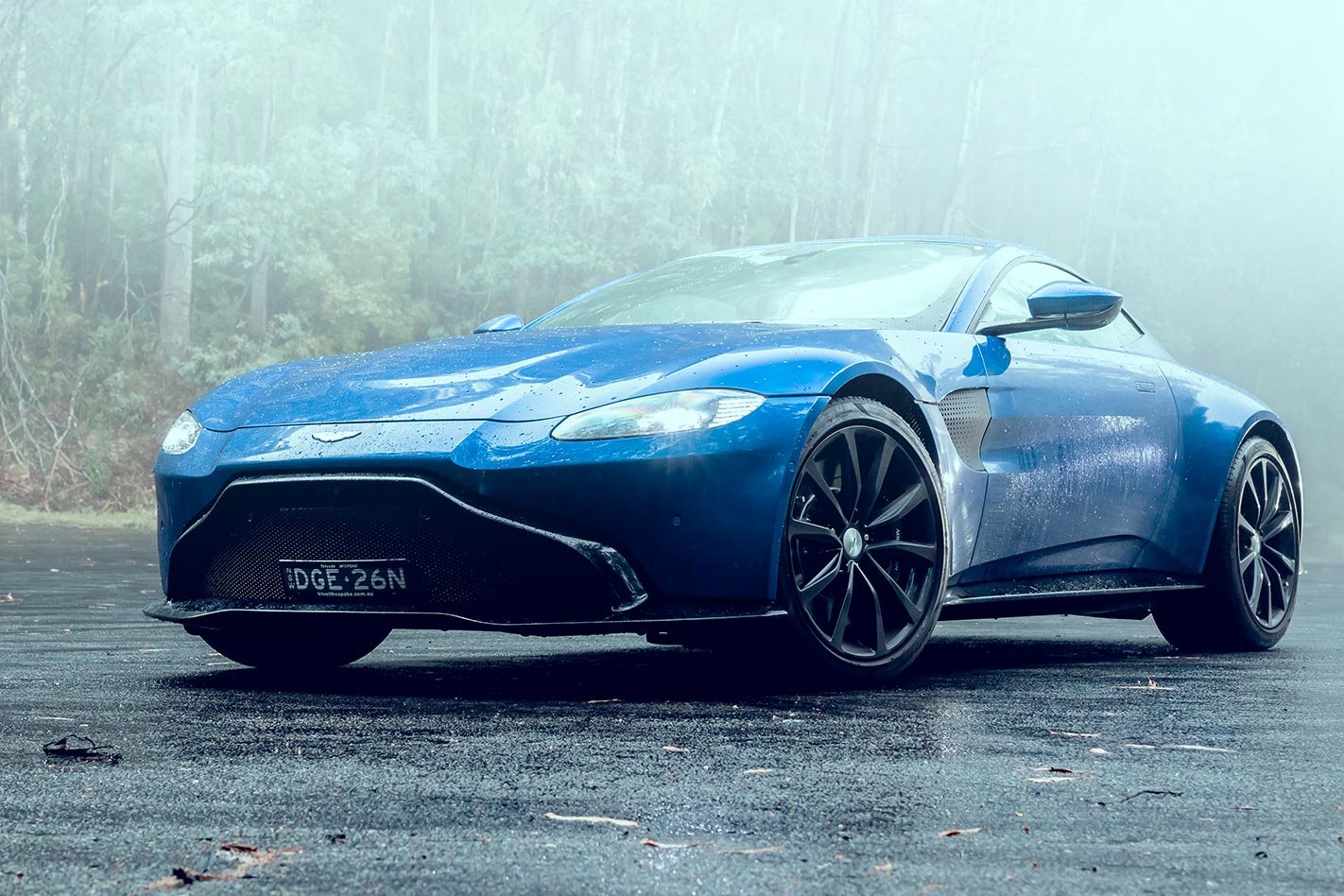Do you know who Matt Becker is? The 48-year-old Englishman looks more like a school headmaster than someone with an intimate knowledge of performance cars, but Becker is Aston Martin’s ‘chief of vehicle attribute engineering’. This makes him responsible for how its range of cars go, stop and handle. He joined Aston Martin after 26 years at Lotus, where his late father Roger served in a similar capacity for almost 44 years from 1966-2010, and Becker Jnr was the chief architect of cars like the Series 2 Elise and Evora.
Given his resume, it’s unsurprising Becker is regarded as one of the finest exponents of his craft, and to drive a recent Aston Martin is to understand why: the DB11 AMR is beautifully judged, the DBS Superleggera a fine grand tourer, and then there’s the Vantage. We’re a little late to the Vantage party, though not through a lack of trying. Press cars have been few and far between on local soil, but persistent badgering has finally paid off with the keys to this Solara Blue example in our hot little hands. We’ve persevered because the Vantage is an important car, the cornerstone of Aston’s sports car range and intended to sell in much greater numbers than the more expensive and exclusive DB11 and DBS models. It occupies the same market as the Porsche 911, so it needs to be good to tempt buyers.
And good it is. Very good, in fact. Once again Becker’s touch is apparent; yes, he no doubt has a talented team working beneath him, but philosophy (and sign-off!) comes from the top. The steering, for instance, feels beautifully natural in its weighting and rate of response. A mark of good steering is that you don’t give it a second thought for it behaves exactly as you’d expect, and the Vantage sits in this category. Well, almost, as the bizarre ‘squircle’ steering wheel does occasionally give the mind pause, but a more conventional wheel is available. It isn’t razor sharp in its responses at 2.4 turns lock-to-lock, but is the better for it, with no hint of nervousness on turn-in.
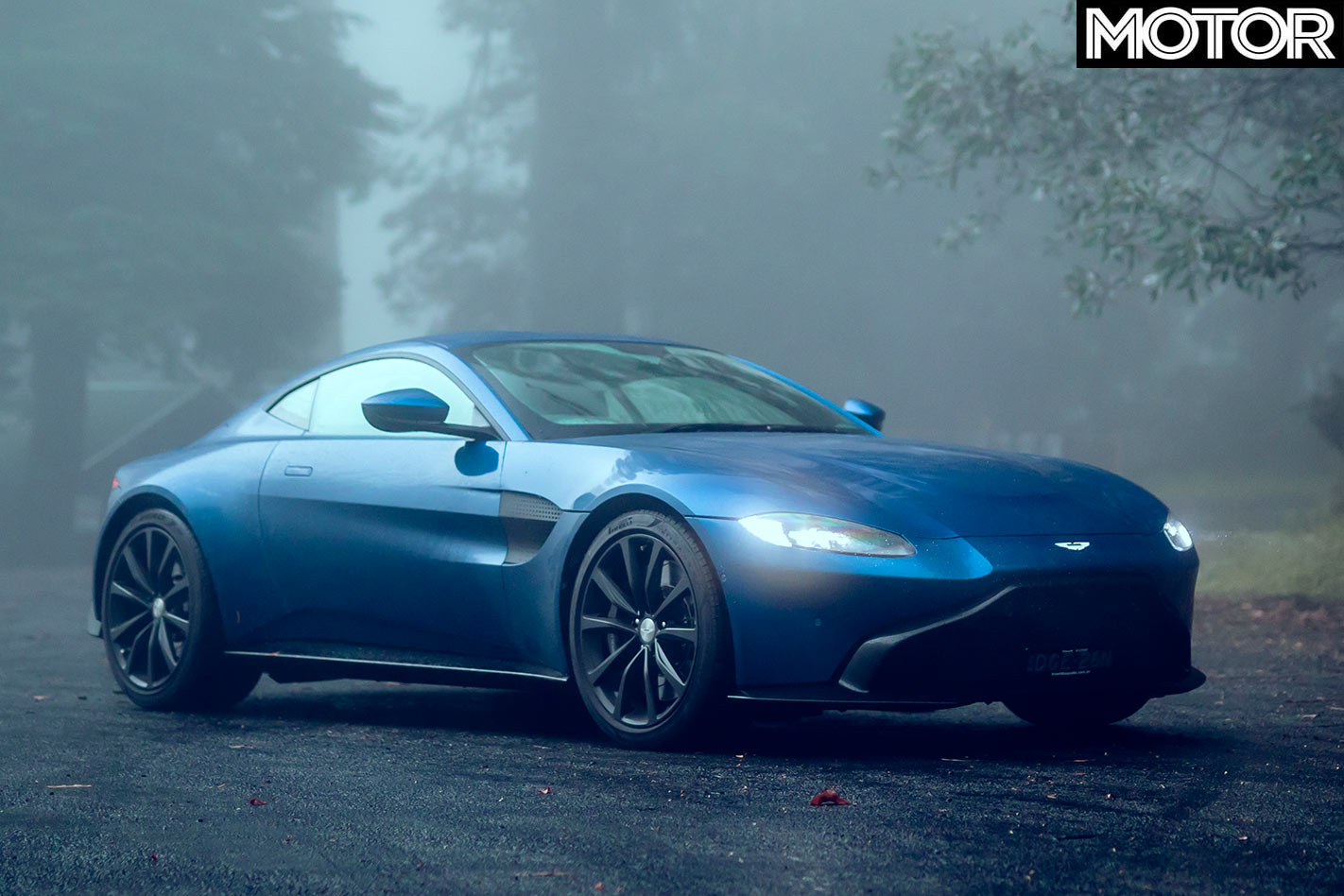
A similar level of polish is exhibited by the Vantage’s suspension. It’s firm, with a sport car’s focus on controlling body movements, but with the three-stage adaptive dampers set to Comfort it soaks up bigger bumps rather than springing out of them. This compliance is the difference between exiting the car content or cursing after a long trip. While the DB11 is the true grand tourer of the Aston range, the Vantage makes a decent fist of it, with a surprisingly capacious 350 litres of luggage space under the rear hatch. The driving position is low and comfortable, but the rest of the interior is sadly a reminder that, in global terms, Aston Martin is a tiny company.
Elements will be down to personal preference. For example, snapper Alastair thinks the black suede dash is an appropriately sporty touch, whereas I’ve seen way too many similar treatments in home-built racecars for it to ever be considered premium. Thankfully, an all-leather dash is an option. The button-fest centre console is a throwback to the early 2000s, but the one benefit of Aston’s old-school approach is that once all the various function locations are learned operation becomes second-nature – a place for everything and everything in its place, as my mum would say.
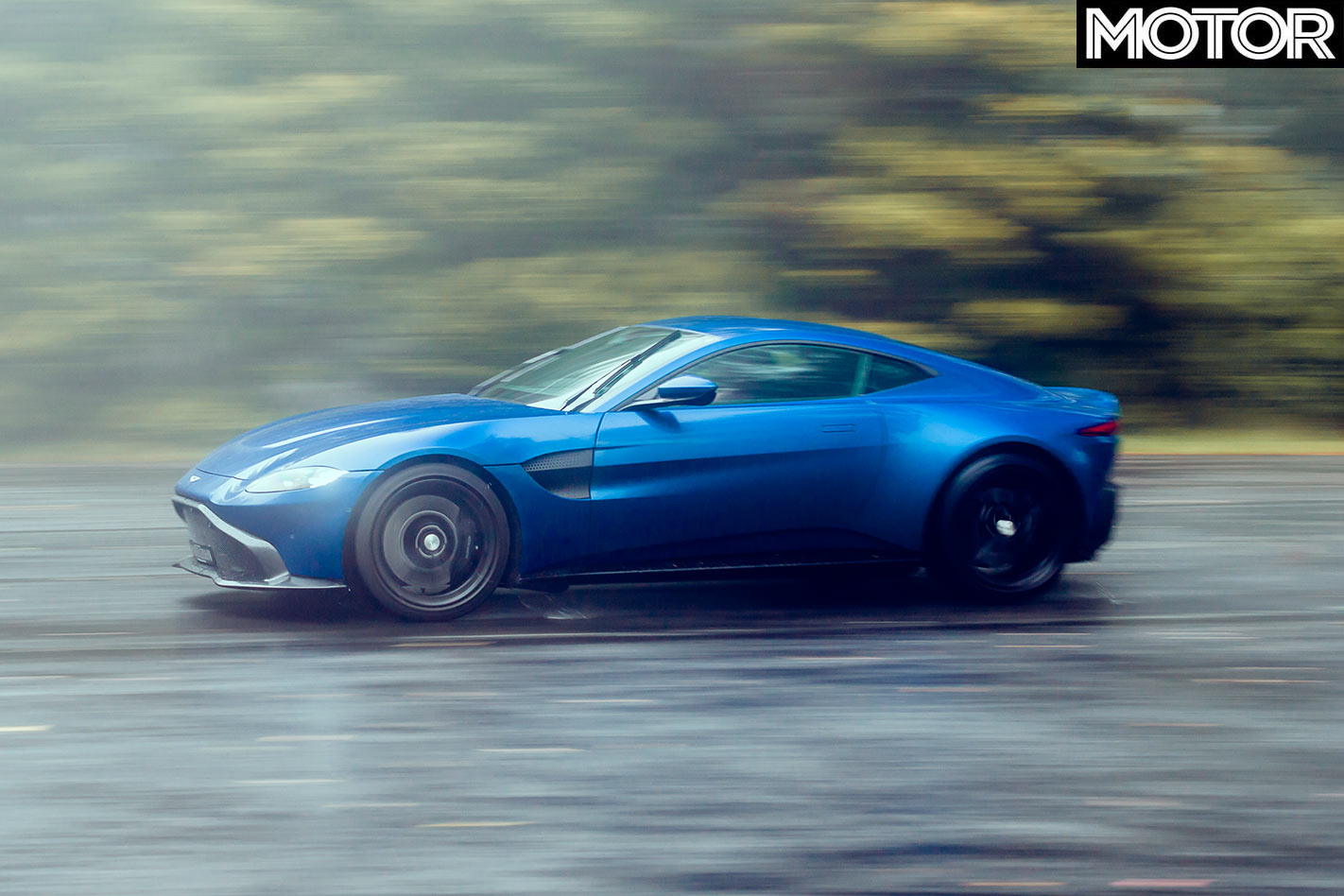
Less contentious is the sub-standard build quality. A number of trim pieces were ill-fitting in our brand-new test car, which is tough to accept in something costing near $300,000. The Mercedes’ COMAND infotainment wasn’t the slickest unit around when new, and hasn’t improved now that’s it’s last-generation tech – the updated system in the new DBX SUV would be a welcome upgrade.
No complaints, however, about the other bit of borrowed Mercedes hardware. The 4.0-litre twin-turbo V8 is AMG’s M177 from the C63 et al, rather than the dry-sumped M178 found in the Merc’s own GT sports car. It essentially comes ready to go from Affalterbach, but Aston fits a slimmer sump and fiddles with the mapping, the result being 375kW at 6000rpm (matching the C63 Coupe) and 685Nm from 2000 to 5000rpm (15Nm less but over a 500rpm-wider span). The Vantage is 45kg lighter, and as such Aston Martin claims (a heavily traction dependent) 3.6sec from 0-100km/h, while the top speed is an impressive 314km/h.
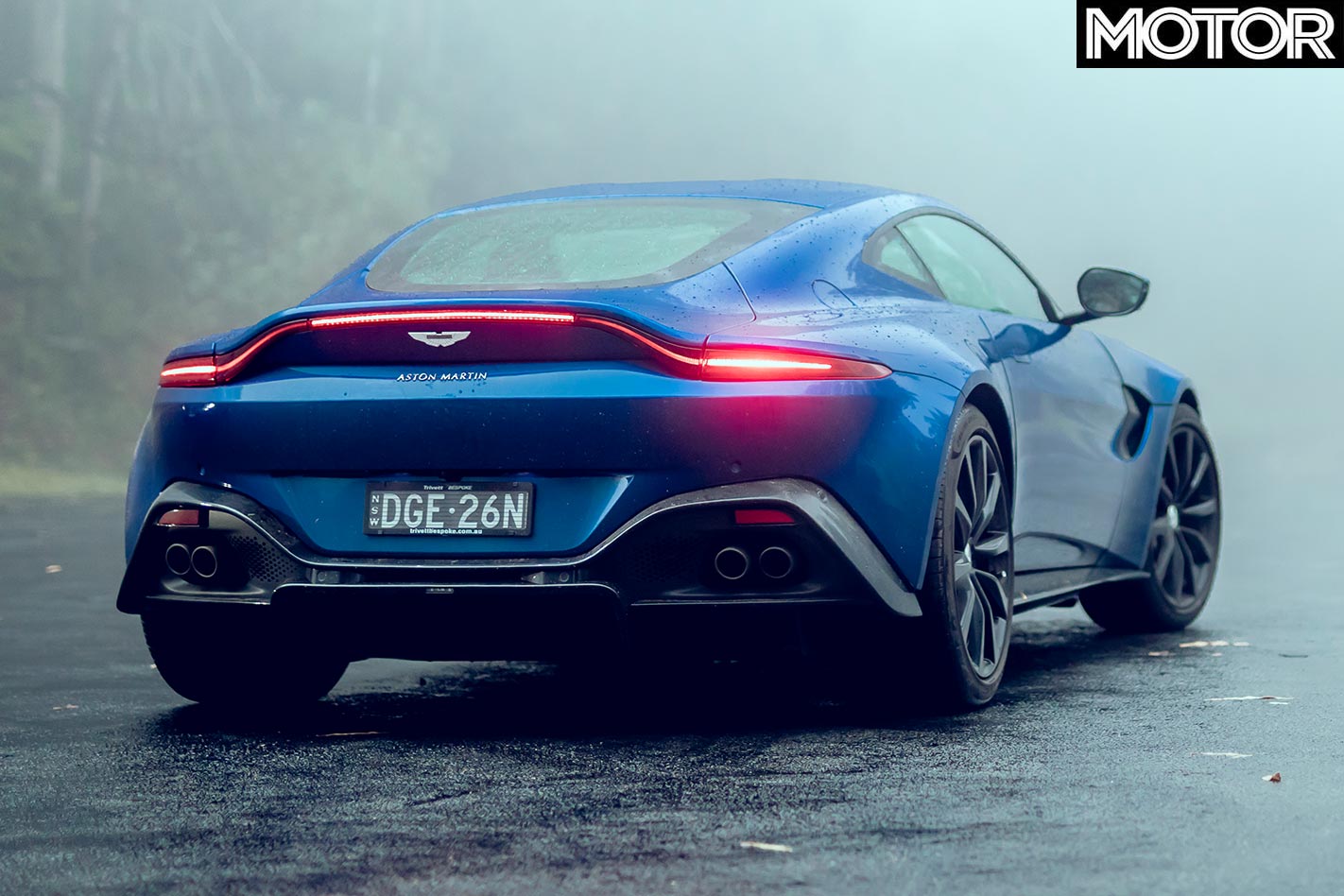
Whether intentional or coincidental, the level of speed is very well judged. Make no mistake, the Vantage is an extremely rapid machine, but not to the level of being intimidating or a handful. Even in the cold, sodden conditions of our shoot, a sensible right foot ensures full traction in second gear. Aston’s M177 installation also has its own personality, the exhausts emitting a crisper, sweeter sound, more hard rock than the C63’s heavy metal. The only downside to the engine’s massive hit of torque is that the top end can feel a little soft in comparison, but that’s the price to pay for such tremendous flexibility.
With so much grunt and such close gearing, most corners can be effectively tackled in third, fourth or fifth. The gearbox is where the Vantage differs most from the AMG with which it shares its powerplant, and it’s an inspired change. Instead of the C63’s wet-clutch auto or the GT’s Getrag dual-clutch, Aston sticks with the tried and tested ZF eight-speed torque converter automatic. As a result, low-speed behaviour is vastly superior, the Vantage smoothly accelerating from rest instead of lurching and thumping, yet ultimate shift speed seems virtually unaffected. This is especially the case with the powertrain set to Sport, which sharpens the otherwise lazy throttle.
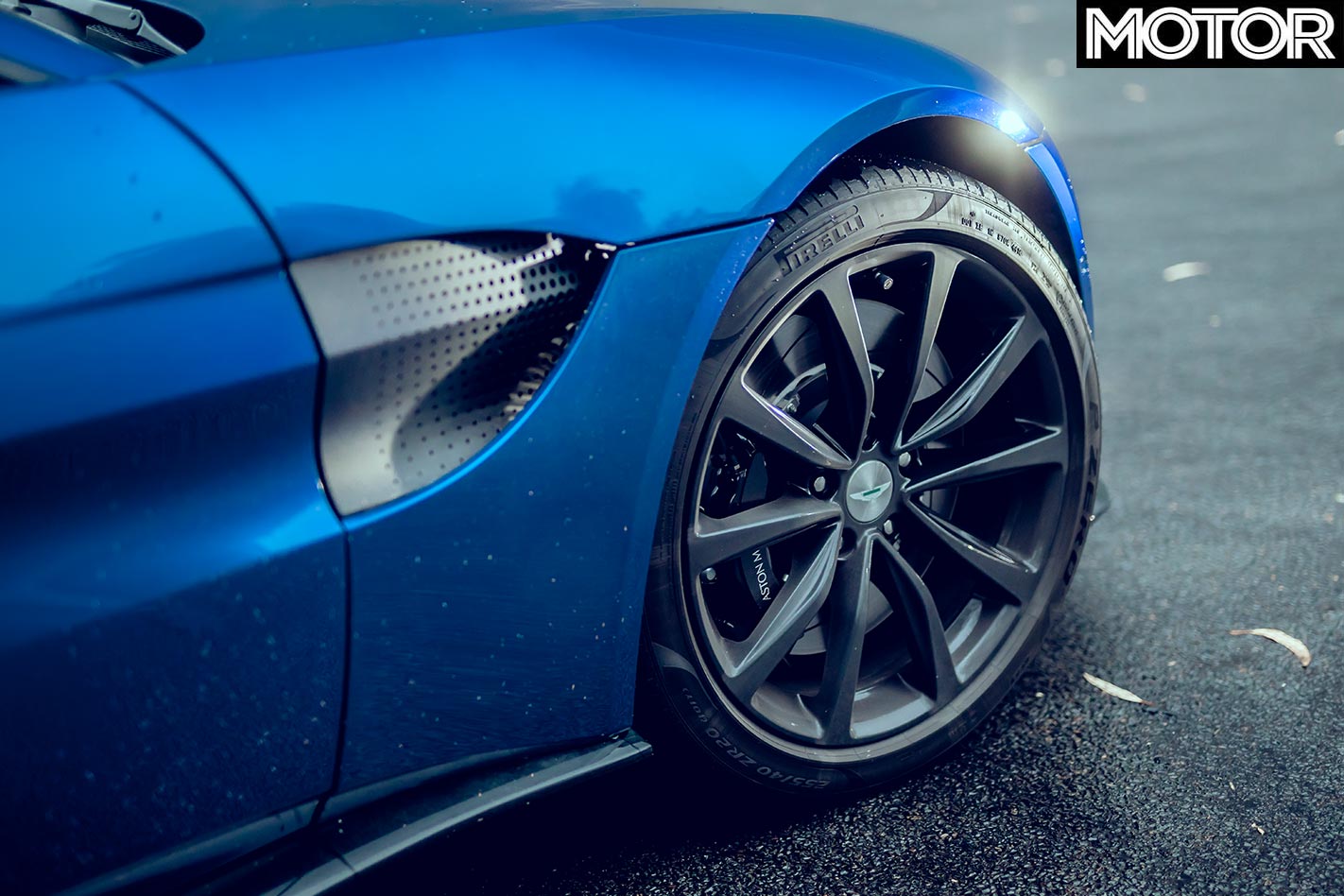
Another Aston Martin masterstroke is to allow the driver to individually manage the powertrain and chassis settings. It’s not necessarily a novel approach, but the Vantage makes it particularly easy, a button on each steering wheel spoke cycling the damping (left) or engine (right) through the Comfort, Sport and Sport Plus modes independently on the fly. Sport chassis and Sport Plus powertrain engaged, it’s time to evaluate Becker’s work in the environment that matters most. All the raw ingredients are there: the Vantage is 54mm shorter and 90mm wider than a 992 911 with an extra 250mm of wheelbase, which gives it a tremendously broad stance and a wheel at each corner. There’s plenty of weight (1680kg) but it’s distributed 50:50 and suspended by double wishbones at the front and a multi-link setup at the rear; Pirelli rubber (255/40 front; 295/35 rear) provides a substantial footprint and there’s an electronically controlled limited-slip diff with torque vectoring, a first for Aston Martin.
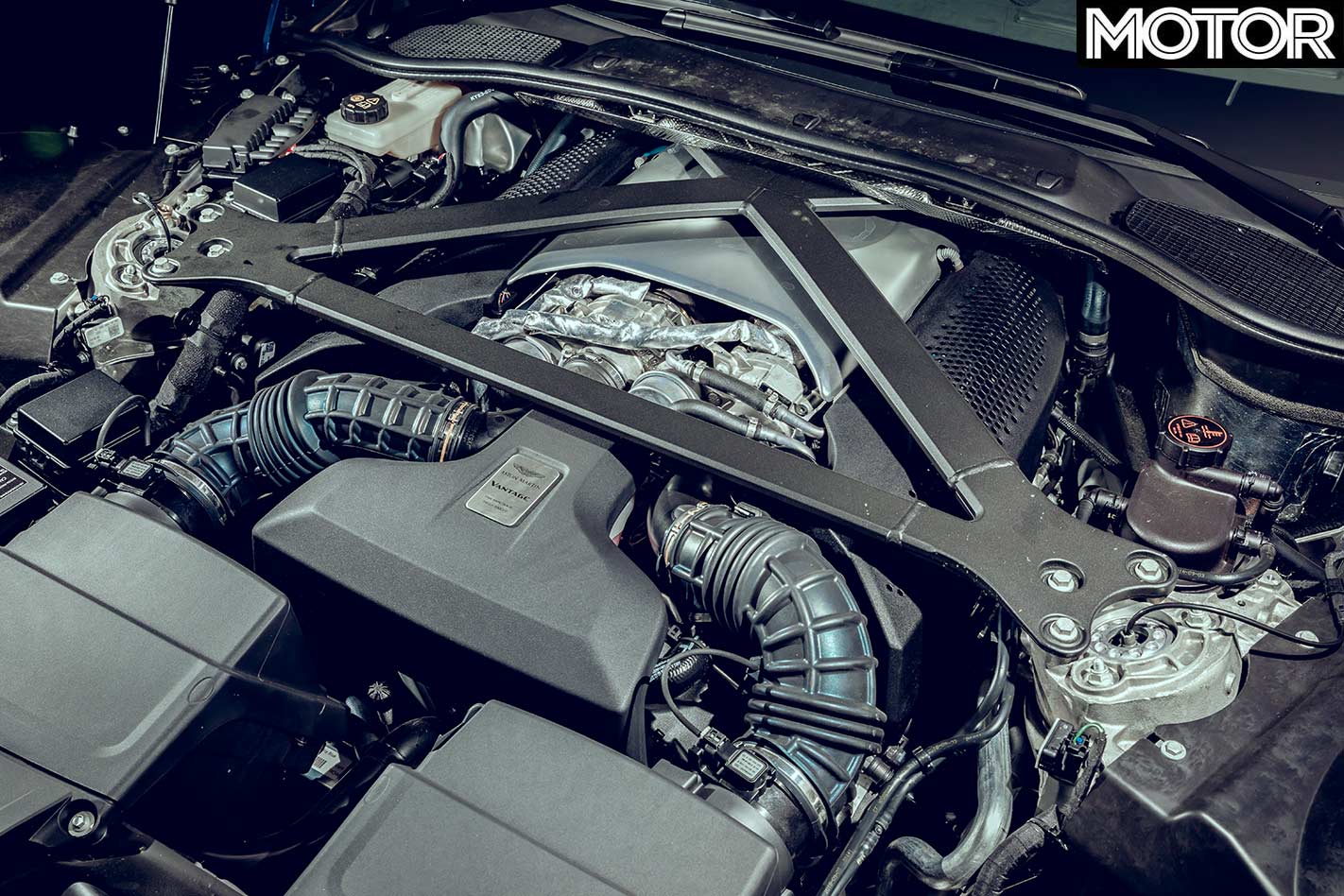
The Vantage actually feels very similar to the latest Toyota Supra, only turned up a few notches. Both have impressive steering, more lateral grip and quicker responses than you’d expect, while working with the road instead of fighting it. Likewise, if the grip runs out mid-corner (unlikely in the dry, fairly common in the wet), it’s the rear that goes first and does so quickly. Aston’s sports car demands quick reactions to match its own and in these conditions feels a little edgy and nervous, but the Track Mode ESP does a great job of allowing slip yet righting the ship when it needs to. It’s more resolved than AMG’s GT, much sharper than an F-Type SVR and more playful than a 911; basically, it’s a bloody good sports car.
In summary, the Aston Martin Vantage is entertaining to drive with a character of its own and a surprising breadth of ability. It looks and sounds great, too, with a badge that still carries a lot of cachet. Whether this is enough to forgive the odd quality issue at this price point will be a question for each individual buyer. Personally, the answer is yes, I love the quasi-muscle car attitude of the Vantage, its brutish styling and the almost endless specification possibilities. Bravo, Mr Becker.
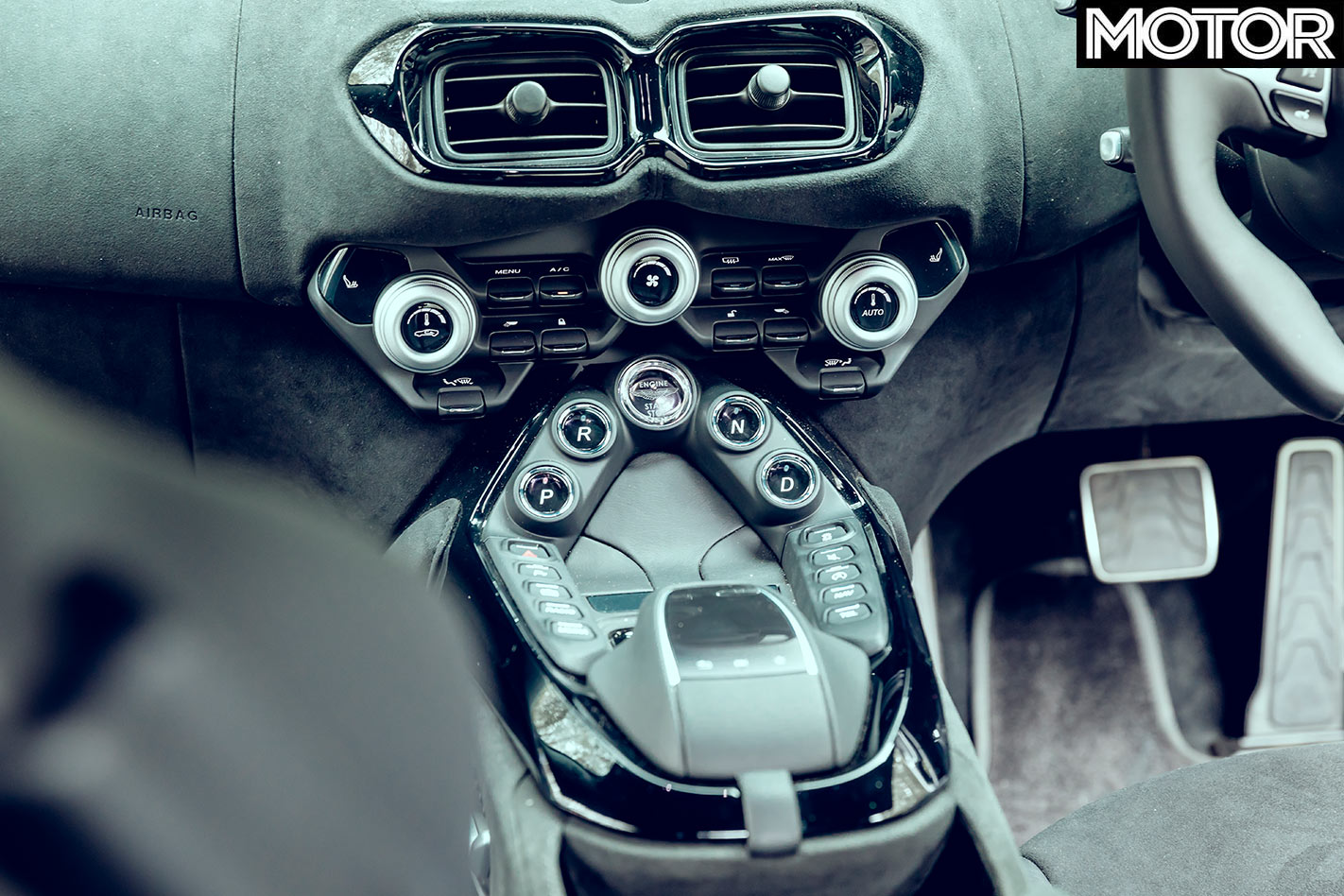
The specs
| u00a0 | Aston Martin Vantage | u00a0 |
| Body | 2-door, 2-seat coupe | u00a0 |
| Drive | rear-wheel | u00a0 |
| Engine | 3982cc V8, DOHC, 32v, twin-turbo | u00a0 |
| Bore/stroke | 83.0 x 92.0mm | u00a0 |
| Compression | 10.5:1 | u00a0 |
| Power | 375kW @ 6000rpm | u00a0 |
| Torque | 685Nm @ 2000-5000rpm | u00a0 |
| Power/weight | 223kW/tonne | u00a0 |
| Transmission | 8-speed automatic | u00a0 |
| Weight | 1680kg | u00a0 |
| Suspension | double wishbones, adaptive dampers, anti-roll bar (f); multi-links, adaptive dampers, anti-roll bar (r) | u00a0 |
| L/W/H | 4465/1942/1273mm | u00a0 |
| Wheelbase | 2704mm | u00a0 |
| Tracks | 1665/1664mm (f/r) | u00a0 |
| Steering | electrically assisted rack-and-pinion | u00a0 |
| Brakes | 400mm ventilated/drilled discs, 6-piston calipers (f); 360mm ventilated/drilled discs, 4-piston calipers (r) | u00a0 |
| Wheels | 20.0 x 8.5-inch (f); 20.0 x 9.5-inch (r) | u00a0 |
| Tyre sizes | 255/40 R20 (f); 295/35 R20 (r) | u00a0 |
| Tyre | Pirelli P Zero | u00a0 |
| Price | 299950 | u00a0 |
| Pros | Well-judged speed; great gearbox; ride and handling | u00a0 |
| Cons | Sub-par interior presentation; option sensitive | u00a0 |
| Star rating | 4 out of 5 stars | u00a0 |


